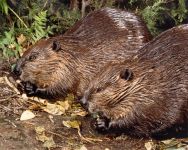


|

|
|
 
|
We endeavor to provide the reader with information on common myths concerning wildlife and offer suggestions on how to deal with them (for beavers, see our beaver solutions document). Where needed, documentation shall be provided to support any factual statements made. This is not intended to be exhaustive, just representative. It is almost certainly the case, as well, that people might find contradictory information. The point, however, is that negative dogma about wildlife is generally not substantiated and, where there is conflicting information, it is prudent – as well as humane-minded – to give the benefit of the doubt to the wildlife.
Many of the myths surrounding wildlife revolve around conflicts that arise when people compete with wildlife for food or habitat. Further, individuals of species that have developed in ways that render them more adaptable to human-altered environments are at greater risk at being in conflict with or killed by people. For a review of this issue, see Barrett et al 2019.
This is a 'work in progress' and shall be added to as time permits. Please revisit this page occasionally to see what updates have been made.
Topics:
There is no such thing as overpopulation in nature. Populations wax and wane depending on environmental conditions including availability of food and habitat. When animals such as rodents increase in numbers, so do the predators who feed on them. In addition, when the number of individuals of a particular species reaches a critical point (we do not necessarily know what that point is), the populations often 'crash' even without predation. Disease and loss of food are important factors. We simply do not know enough about nature to justify any claims that we can 'manage' wildlife better than nature and without causing serious unintended consequences. Often, our 'management' schemes are based more on self-interest than on scientifically defensible actions. Consider the following statements by wildlife biologists (Decker et al 1991):
"Wildlife science per se can rarely demonstrate that any decision leading to a management objective, such as decreasing a deer population, or to a management action, such as hunting animals, is a biological or ecological necessity. … Similarly, the decision to harvest a portion of a wildlife population is a reflection of a value position, a conclusion based partly on scientific evidence and efficacy of known alternatives and partly on particular beliefs about the appropriateness of certain human uses of wild animals (Kennedy 1985)."
"If a professional wildlife manager suggests that a decision is based solely on scientifically-derived biological considerations, the manager either misunderstands the nature of science (by confusing scientific judgements with ethical judgements) (Underwood and Porter 1991) or is deliberately trying to disguise or complement a value judgement under the veil of the legitimacy of science."
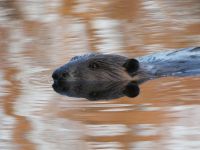
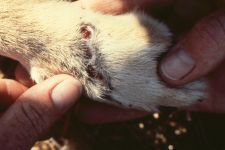
Trappers state that the trapped limb becomes numb. Whereas the part of the limb distal (away from the body) to the point of contact with the trap jaws could become numb (after an indeterminable period), the tissue caught in the jaws, any dislocated joint or broken teeth would not be numb. There still would be extreme pain with every movement of the animal.
Another defense trappers use to deny the suffering of the trapped animals is their observation that some animals are 'asleep' in the traps. There are at least two explanations for this phenomenon, assuming it is true. One explanation is that the animal may succumb to sleep after a period of futile attempts to escape. This is not, however, evidence that the traps do not cause pain. People injured in accidents manage to sleep despite being in pain. The other possibility is that the trapped animal succumbs to a well known phenomenon: learned helplessness. In this situation, the animal being subjected to pain from which there is no escape 'learns' that struggling will not help and eventually gives up.
Many trappers contend that leghold traps allow them the opportunity to release unwanted animals (if they still are alive when found). This is misleading, however, because many of those animals are too debilitated from the damage caused by the trap to compete for survival, and die later as a result of their injuries (Englund 1982; Kuehn et al 1986; Van Ballenberghe 1984). For example, essentially all raptors (birds of prey) who are victims of these traps sustain severely debilitating injury, particularly to their legs, which renders them unable to survive in a free-living state (Durham, 1981). This is true even with so-called padded traps or other so-called 'humane' traps. Whereas trappers have tried to convince society that the 'padding' or other modification prevents damage, therefore causing less pain, this is not true. Several studies have been done comparing the effects of 'padded' versus unpadded traps or other modified traps on various animals, and have shown that both could and did cause the same degree of damage, including laceration of skin, joint luxations and fracture of bones (Anon; Anon 1984; Durham 1981; Gruver 1996; Hubert 1999; Kamler et al 2000; Olsen et al 1986; Olsen et al 1988; Onderka et al 1990; Proulx et al 1993).

It is unquestionable, however, that killing bears does not reduce or mitigate conflicts with people (Tavss 2005). The best way to reduce or prevent conflicts with bears is to educate people about how and when to avoid them, stop feeding them, secure garbage and generally take measures to prevent attracting bears into human residential areas (Atkinson 2007; Baruch-Mordo et al 2011).
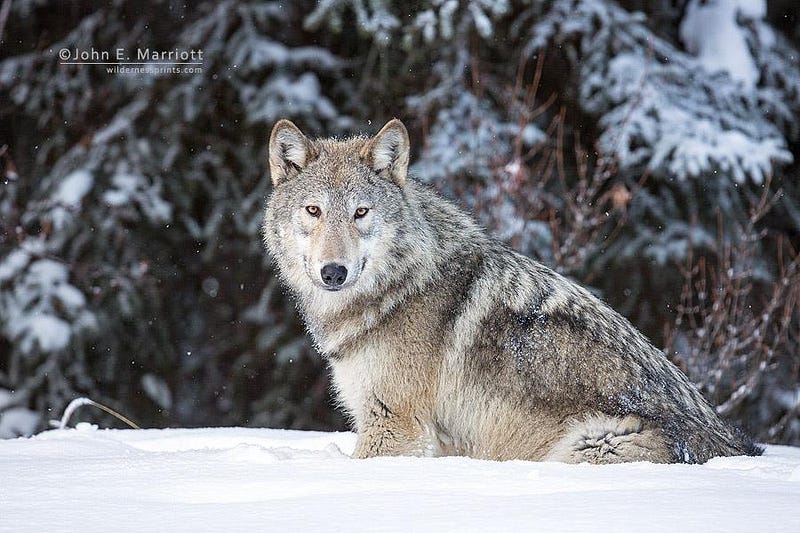
With 'livestock', it has been shown that killing wolves results in more wolf-related killing of 'livestock' in the years that follow (Wielgus et al 2015). With moose, there is a complex relationship between wolves and moose populations, with availability of food for moose, not the presence of wolves, an important factor in determining population stability (Peterson et al 1984). In the case of antelope and deer, a vibrant wolf population increases their numbers because it reduces the population of coyotes whose predation of recently born offspring is responsible for reducing herd sizes (Berger et al 2008; Berger et al 2008). As with all situations with wildlife, our interference, in this case the killing off of large predators such as wolves, results in unintended and negative results with respect to other animals and biodiversity (Berger et al 2008). One such example involves Scotland, where people killed off the wolves resulting in red deer 'overpopulation'. Because this unnatural increase in deer numbers began causing 'problems', the Scots proposed to reintroduce the wolves as a solution (Anon 2009).
Incidentally, hunting wolves results in devastation to their numbers, far greater than through a simple mathematical reduction by the number killed (Creel et al 2010).

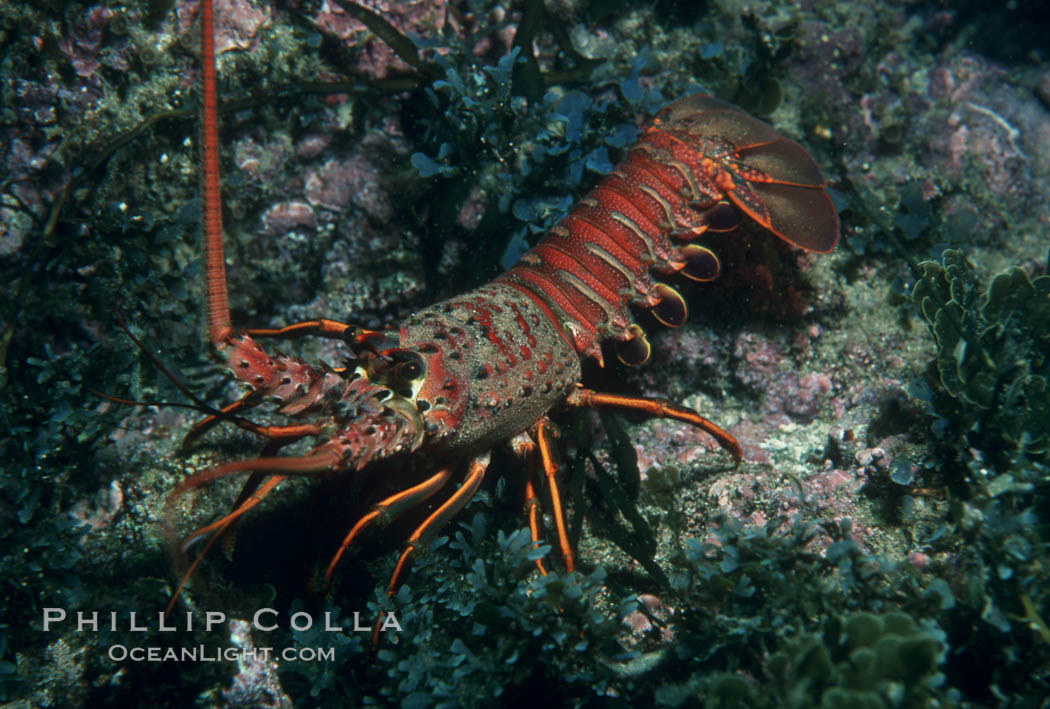
It would be incredible, to say the least, if animals with nervous systems – albeit it comparatively 'primitive' in crustaceans – would not have developed mechanisms based on pain to cope with various threats to their lives. Whereas one species, such as a human being or other mammal, may utilize a particular neurological configuration to process noxious (painful) stimuli or other information, another species may utilize a different system with similar results (Chittka & Niven 2009). The fact that certain features of the mammalian nervous system are lacking in invertebrates such as crabs or lobsters does not a priori prove that pain is not a part of their world or that it is somehow less noxious or important to them. This type of logic would lead one to the absurd conclusion that creatures such as crabs and honey bees cannot see because they do not have a central visual center as seen in mammals.
There is a growing body of scientific studies that provide conclusive evidence that animals such as crabs and lobsters feel pain and may suffer (Appel & Elwood 2009; Barr et al 2008; Elwood & Adams 2015; Elwood & Appel 2009; Elwood et al 2009; Magee & Elwood 2013). Crayfish display behavior that is analogous to anxiety (Fossat et al 2014). Just how much crustaceans may suffer and whether it is in a manner similar to mammals such as cats, dogs or human beings, for example, is open to question. But, it would be inappropriate and biologically and morally inconsistent to do something to them that one would not consider doing to those mammals. A compassionate and logically thinking person would ask the question, Why do something that could cause harm when not doing it would definitely not cause harm?
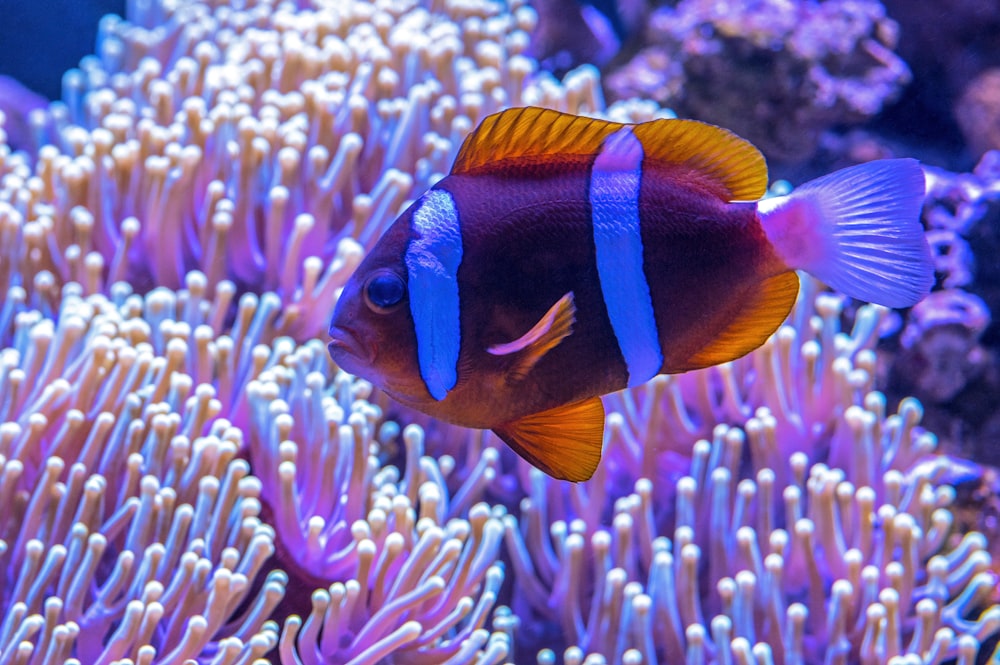
Chandroo and colleagues (Chandroo et al 2004) concluded that the scientific literature available at the time not only indicated that fish could feel pain, but also that they could suffer. More scientific studies since then have added further evidence (Dunlop el al 2006; Nordgreen et al 2009). Professor Marc Bekoff, an internationally renowned animal behavior scientist, has also concluded that fish feel pain and suffer very much like other vertebrates (Bekoff 2014).
Please see our deer information page for information on this subject.
References:
Researchers are proposing in a new report that a major experiment be conducted to reintroduce wolves to a test site in the Scottish Highlands, to help control the populations and behavior of red deer that in the past 250 years have changed the whole nature of large ecosystems.
…scientists point not just to the effect of large predators in helping to control the populations of grazing animals, but also their behavior. The threat of predation and attack can fundamentally change the movement and activities of grazing animals 24 hours a day, 365 days a year, in ways that such approaches as human hunting fail to do.
The native red deer in Scotland – essentially the same animal as elk in the United States – have not faced predation or fear such as that for 250 years. Deer densities in that country are now thought to be so high they are close to the food-limiting carrying capacity of the land, and have serious consequences on native Scots pine and birch regeneration.
These findings are consistent with the idea of a pain experience rather than a nociceptive reflex.
These results indicate an awareness of the location of the noxious stimuli, and the prolonged complex responses indicate a central involvement in their organization. The inhibition by a local anaesthetic is similar to observations on vertebrates and is consistent with the idea that these crustaceans can experience pain.
In contrast with previous studies, the changes in herbivore populations that we observed resulted not from direct predation by a top carnivore, but rather as a result of indirect effects mediated by changes in mesocarnivore abundance. The strong, negative correlations between coyote and wolf densities, and coyote densities and fawn survival, support the hypothesis that mesopredator release of coyotes, resulting from the extirpation of wolves throughout much of North America, contributes to high rates of coyote predation on pronghorn fawns observed in some areas. Thus, from both management and conservation perspectives wolf restoration holds promise for reducing coyote predation rates on neonatal ungulates such as pronghorn, mule deer (Odocoileus hemionus), and white-tailed deer (Odocoileus virginianus).
Thus, wolf restoration holds promise for enhancing ungulates populations by reducing coyote predation rates on neonates of species such as pronghorn, mule deer, and white-tailed deer.
To the extent that large carnivores exert top-down forces on systems, our results suggest that their loss or removal may result in unanticipated effects on ecological communities that may lead to further decreases in biodiversity.
The nature of the mosquito fauna in such impoundments can be of considerable interest to the associated human populations. The information presented here indicates that the presence of increased areas of impounded permanent water need not necessarily mean that larger pest mosquito populations will appear.
Drastic reduction of populations of univoltine temporary pool mosquitoes followed impoundment of breeding areas by beavers. Mosquito populations persist at very low levels over a 10-year period with no evidence of mosquito development in the impoundment.
Anatomical, pharmacological and behavioural data suggest that affective states of pain, fear and stress are likely to be experienced by fish in similar ways as in tetrapods. This implies that fish have the capacity to suffer…
Many insects, however, demonstrate that highly differentiated motor repertoires, extensive social structures and cognition are possible with very small brains, emphasising that we need to understand the neural circuits, not just the size of brain regions, which underlie these feats.
For wolves, it is widely argued that human offtake has little effect on total mortality rates, so that a harvest of 28-50% per year can be sustained. Using previously published data from 21 North American wolf populations, we related total annual mortality and population growth to annual human offtake. Contrary to current conventional wisdom, there was a strong association between human offtake and total mortality rates across North American wolf populations. Human offtake was associated with a strongly additive or super-additive increase in total mortality. Population growth declined as human offtake increased, even at low rates of offtake. Finally, wolf populations declined with harvests substantially lower than the thresholds identified in current state and federal policies.(emphasis added)
These results suggest that shock avoidance in fish is not purely a reflex action. Fish were prepared to change the supposedly innate avoidance reaction according to a change in circumstances, an important concept in the ongoing debate on pain perception in fish.
The results are consistent with the idea of pain in these animals.
We conclude that there is considerable similarity of function, although different systems are used, and thus there might be a similar experience in terms of suffering.
There were numerous broken teeth.
Thirty percent of the foxes caught in unmodified leg-hold traps had broken bones, in most cases the phalanges or metacarpals… A higher percentage of the foxes taken in modified [surfaces covered with plastic] leghold traps had broken bones…
We tend to assume that complex emotions, such as anxiety, only occur in mammals or other cognitively complex vertebrates. ...these invertebrates display a primitive form of anxiety that shares a mechanism with the more complex emotions displayed by vertebrates.
In 38% (15 of 40) of incidents, peoples' food or garbage probably influenced the bear being in the attack location. … With training, people can learn to recognize the behaviors of a bear considering them as prey and can act to deter predation.
Broken, chipped, or dislodged teeth occurred in 89 (44%) adults and in 15 (14%) juveniles…Individuals also suffered lacerations, joint dislocations and fractures of bones.
These data, and those of other recent experiments, are consistent with key criteria for pain experience and are broadly similar to those from vertebrate studies.
Department of Environmental Protection spokesman Larry Ragonese said Patel's death in the Apshawa Preserve is the first fatal bear attack recorded in New Jersey in 150 years.
All models of padded foothold traps reduced but did not eliminate trap-related foot injuries in coyotes and kit foxes.
The same types of serious and painful injuries, such as lacerations, joint luxations or subluxations and broken teeth, occurred with the padded trap (and foot snares, especially Novak), although with less frequency.
After a decade of dramatic population fluctuations, protected populations of wolves and moose in Isle Royale National Park in Lake Superior returned in 1983 to the levels observed in the 1950's. Inherent lags in this predator-prey system and the strong recovery of the moose population following a wolf population crash suggest that these populations may continue to cycle with a period length of about 38 (95 percent confidence interval, ±13) years. Such a long-term cycle is consistent with the proposal that period length of herbivore population cycles will characteristically scale according to the fourth root of body mass, a basic allometric relation linking physiological cycles to population processes.
The results demonstrate that at every site in which the hunting approach was evaluated no effect in reducing the human complaints/conflicts was observed while at every site in which the non-violent program was evaluated, the non-violent approach was demonstrated to be markedly effective in reducing human complaints/conflicts, [sic]. It is particularly important to note that in the state of New Jersey the number of complaints has been statistically significantly declining over the last seven years, consistent with using the non-violent approach.
Very severe, potentially life threatening injuries (class IV) occurred in 11% of all captures involving traps.
Only 14 captures involved traps with offset jaws and teeth. Three of these resulted in class IV injuries of the foot demonstrating that such injuries are possible even if the foot is held from slipping between the trap jaws.
Tooth, lip, and gum injuries occurred in 50 (46%) of 109 captures of wolves in steel traps. Tooth injuries ranged from breakage of one or two small teeth to breakage of all four canine teeth plus several other incisors and premolars. Lip and gum injuries included abrasions and lacerations often accompanied by severe edema.
Steel traps, as used in this study, produced a high rate of severe injuries even when checked daily.
Predator control and sport hunting are often used to reduce predator populations and livestock depredations, – but the efficacy of lethal control has rarely been tested. We assessed the effects of wolf mortality on reducing livestock depredations in Idaho, Montana and Wyoming from 1987-2012 using a 25 year time series. … We found that the number of livestock depredated was positively associated with the number of livestock and the number of breeding pairs. However, we also found that the number of livestock depredated the following year was positively, not negatively, associated with the number of wolves killed the previous year. The odds of livestock depredations increased 4% for sheep and 5-6% for cattle with increased wolf control - up until wolf mortality exceeded the mean intrinsic growth rate of wolves at 25%. Possible reasons for the increased livestock depredations at [-<]25% mortality may be compensatory increased breeding pairs and numbers of wolves following increased mortality. After mortality exceeded 25%, the total number of breeding pairs, wolves, and livestock depredations declined. However, mortality rates exceeding 25% are unsustainable over the long term.
We found that black bears in Massachusetts are operating in a landscape of fear and are altering their movement patterns to use developed areas when human activity is low.
The use of the term wildlife here refers to animals. We recognize that it broadly also includes plants.